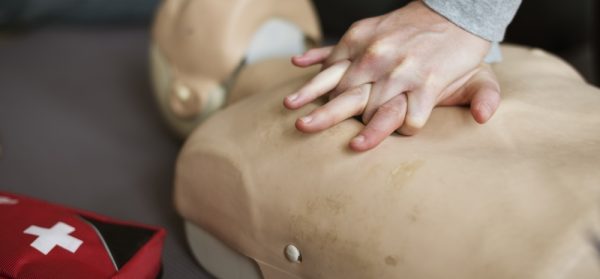
CPRNM® is a comprehensive directory designed to connect individuals and employers with top-tier training
providers including the AHA®, Red Cross®, and other training providers.*
Millions of Americans suffer from insomnia on a regular basis, rendering this unfortunate affliction as widespread as the common cold and depression. Barring any underlying serious mental or physical illness (e.g. depression, anxiety, asthma, allergies, etc.), the causes of insomnia tend to either fall under the category of temporary life stresses or an inability to relax.
Regular exercise, a quiet and clearly delineated sleep space, setting a sleep schedule and regulating caffeine intake are three effective ways to tackle the problem head on.
Exercise & Insomnia
Some of the restlessness that comes with insomnia can be attributed to lack of physical exercise. The human body is designed to engage in a certain level of physical activity every day, but sadly, many Americans spend more and more time inert, sitting stationary in front of a computer screen or television.
Engaging in moderate to strenuous exercise for at least 30 minutes a day, every day, is beneficial for maintaining one’s cardio and muscle health, and for expending a degree of energy sufficient enough to induce sleep more easily.
Create an Environment Conducive To Sleep for Insomnia
Your surroundings can have a profound negative or positive effect on your sleeping patterns.
Ideal sleeping quarters are darkened and quiet, with noisy and intrusive electronic devices such as televisions, stereos, and cell phones shut off. In an era of cutting-edge technology and the interconnectedness that comes with it, it’s easy to forget that it’s not only OK but downright necessary to regularly unplug the stuff and have quiet time alone.
Keep your workspace out of the bedroom entirely. It’s important not to blur the line between a bedroom space and a workspace by putting one’s desk in the corner, or bringing the laptop to bed. Keep these spaces, and the activities that occur in them, separated.
Also, make sure that your sleeping quarters are maintained at a temperature that’s comfortable for you. For most people, this would be a temperature between 65 and 70 degrees.
Set a Sleep Schedule for Insomnia
For many of us, this is likely the hardest item on the list to accomplish, particularly when dealing with erratic work shifts and/or child rearing. As much as possible, you’ll want to go to bed and
get up at the same time every day, regardless of whether you feel tired enough to sleep, or awake enough to stop sleeping. By enforcing your sleeping and waking times, you can program your body clock, making drifting into sleep a less frustrating and more automatic experience.
Regulate Caffeine Intake to Reduce Insomnia
Don’t worry: You don’t have to give up your cup (or two) of coffee in the morning. To avoid insomnia, avoid drinking caffeinated beverages after 12:00 PM, relegating caffeinated coffees and teas to morning hours. The goal is to have any caffeine out of your system within eight hours of bedtime. Eliminating caffeinated carbonated beverages altogether is also a good step to take, not only to prevent insomnia but for overall health. Replace that dinnertime glass of soda with a glass of wine!
While most of us like to get a caffeine kick in the morning to get started, any caffeine ingested less than four to six hours before bedtime is sure to cause sleeping problems. For diehard coffee and tea junkies who drink for taste as well as an energy boost, choose decaffeinated varieties of your favorite coffee or tea for nighttime consumption. Avoid sweetening these decaffeinated hot beverages, as sugar is also a culprit in producing unwanted nighttime restlessness.
 July 21, 2016
July 21, 2016 






